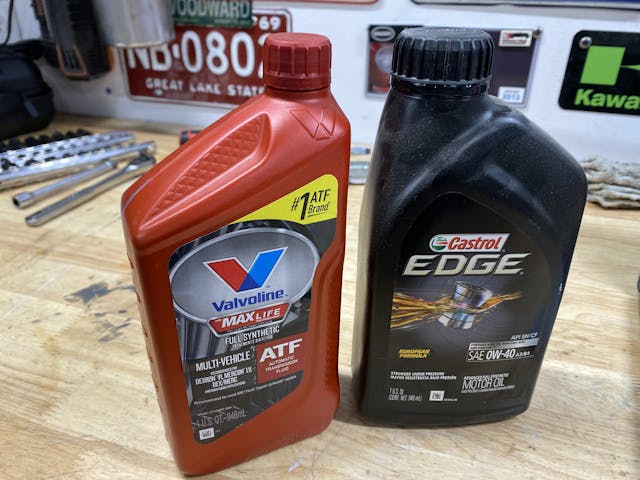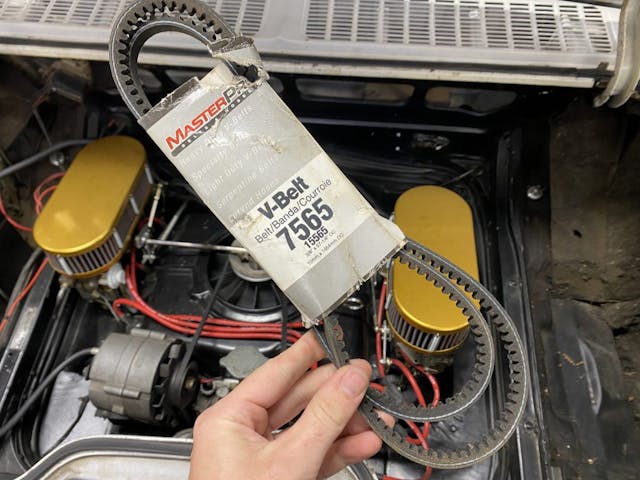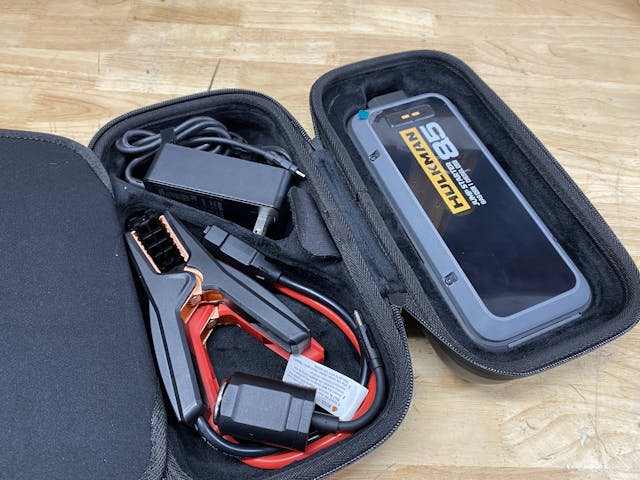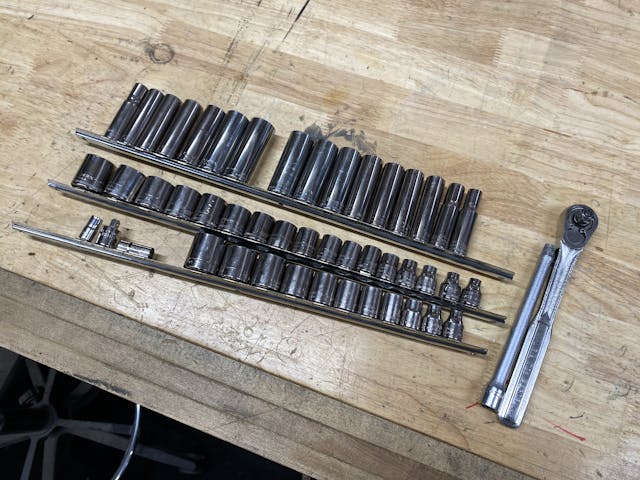Media | Articles
6 essentials for your travel toolkit
Don’t let the fall colors scare you into pickling your car for winter just yet. In many parts of the country, this is the best time to be out on the road. Color tours are spooling up all over the northeast, and as the temps drop in the southwest, vintage cars are returning to the roads—but that means more than a few will likely end up on the roadside too. Set yourself up for success and pack a toolkit to at least handle the basics.
Of course, for bigger trips or questionable cars, it makes sense to pack a big kit that could cover just about everything, but that is not right for every person or situation. As the old saying goes, the best time to build a toolkit for your vintage ride was yesterday and the second best time is right now. Even if you aren’t handy or do your own maintenance it is never known who might stop and offer help and without tools that good Samaritan is reduced to good thoughts. Here are six basic essentials for your travel toolkit.
Screwdrivers
Much of any car is assembled with slotted and Phillips-head screws, and even a precursory inspection often requires removing an access panel or cover. Sometimes a noise or vibration does not indicate immediate death for your car or engine, and after inspection you can determine if it is safe to carry on your way despite some part or piece misbehaving. A screwdriver can also act as a stethoscope in a pinch too, allowing you to track down a goofy noise for better diagnostics with less disassembly.
Pliers
Whether you need to deal with a stubborn spring hose clamp or moving a piece that got a little hot, pliers are the tool for the job. At bare minimum you should carry needle nose and slip joint pliers, as these will cover the vast majority of tasks on the roadside. Bonus points if your needle nose pliers have a cutting edge, as this will work for wiring repairs or stripping.
Fluids
We can’t live without water, and your engine can’t live without oil and coolant. They’re the fluids you’re most likely to lose and can still safely refill and continue your drive. Some folks will tell you to carry brake fluid, but if you’re losing brake fluid, that’s not something to top off and continue. Your brakes are a critical safety system that should be repaired properly by a pro, and your Hagerty roadside assistance card is going to be the best tool to use if the brake reservoir runs out while on the road.
Marketplace
Buy and sell classics with confidence
Belts
Most vintage engines run simple V-belt setups, but that system has been usurped by the serpentine belt. Relying on a chain parts store to have a variety of V-belts can be a big ask since they likely don’t sell many and thus only stock the most popular sizes. Belts are light and pack down small, so having the proper belts for your car is a no brainer.
Jump pack
Batteries go flat. It just happens sometimes, especially on vintage electrical systems in which small draws can go unnoticed until its too late. A jump pack can provide the juice to get your engine running again or keep it running in a real pinch. Also, most jump packs these days are small and light, while also packing more punch than ever. A bonus is it allows you to charge your phone or other critical accessories if you find yourself stranded and waiting for a tow.
Sockets and wrenches
Yeah, duh. It’s hard to take anything apart or service pieces without the ability to remove nuts and bolts. If you are handy and want to carry the bare minimum, start by looking under the hood and picking just the wrenches and sockets for jobs you are willing to do on the roadside. If in doubt, grab a full set of shallow and deep sockets for both SAE and metric, because you never know what hack might be hiding under the hood where someone previously mixed hardware. This also gives you the chance to be the hero in someone else’s story when you have the socket they need in order to leave the car show.
Bonus: Tool roll
Personally, I hate random things rolling around my car, doubly so if they make noise. A simple tool roll is cheap and allows you to keep all your trip-saving bits and pieces together. Tuck it all under a seat or in back with the spare tire, and rest easy each time you take the car out knowing that you’ve got at least the bare minimum needed to keep your trip on the road rather than the shoulder.
Is there something you’d add to a super basic toolkit? Leave your suggestion in the comments below.
Check out the Hagerty Media homepage so you don’t miss a single story, or better yet, bookmark it.




























My Hagerty Driver’s Club membership! And, maybe not thought of as part of a tool kit – a fire extinguisher!
Keep in mind that most hardware stores carry a large variety of V-belts. It is just that you have to purchase them by length not application.
Duck tape and a small roll of bailing wire and a small pair of vice grips
I placed a 6”x12” rectangle of 3/4” plywood in all my vehicles (hers, kids’, and mine) to stabilize the scissor jack base on an uneven roadside surface. If your classic has a bumper jack, this is a must-have as well. For most cars, drill a 1/2” hole in the center, fit it in the middle of the spare’s wheel rim over the spare tire well hold-down lug, and secure it using the hold-down nut. I bungee it w/the tire changing tools stored behind the back seat of my truck. Improvise the size, shape, and storage for your particular application. I’ve only had to use it one time, but on the gravel-and-dirt shoulder just after that rainstorm a few years back, it was a lifesaver!
Bailing wire spool and duct tape are excellent choices, could add a magnet for retrieval of escaped tools and dropped fasteners.
Nylon panty hose can make a temporary drive belt.
are panty hose still a thing?
Surprised the author didn’t mention a 12v/120v inflator, there are any number to choose from and I’ve lost track of how many times I’ve used mine. And there’s the added bonus of not having to pay for air when you want to top up the air pressure on your tires.
zip ties / 12v tester / wire / vehicle specific spares- every vehicle has its |”Achille’s Heel” (fuses, fuel pump relay, etc) rags/hand cleaner
This is exactly what I carry (minus the ATF, LOL) plus coolant, duct tape and a 1/2″ breaker bar and socket for my wheel lugs and a funnel for oil.
This is exactly what I carry (minus the ATF, LOL) plus coolant, duct tape and a 1/2″ breaker bar and socket for my wheel lugs and a funnel for oil and coolant.
I do carry a test light. You can do a lot of electrical troubleshooting with a $5 test light and old cars are somewhat prone to electrical problems.
Electrical Tape, Duct Tape, small hammer, pocket saw (once needed to trim a plastic bumper away from a tire to keep driving)
a roll of electrical tape plus a bottle jack.
I used to carry a steel coat hanger, electrical tape and always had a pocketknife.
I always have a 12v inflator in the trunk.